Ticker for May 24, 2012
MESONET TICKER ... MESONET TICKER ... MESONET TICKER ... MESONET TICKER ...
May 24, 2012 May 24, 2012 May 24, 2012 May 24, 2012
Is Oklahoma in the midst of flash drought development?
In my opinion, that is exactly what we are seeing as exceedingly dry, warm and
windy weather continues. A flash drought is exactly what its name implies --
a more rapid development of drought (monthly time scale) as compared to its
normal time scale (seasonal). The distinction is very much akin to the difference
between river flooding and flash flooding ... the time scale is the key.
The development of flash droughts normally occurs during the summer months,
but in reality our warmth started early this year. We are well on our way to
seeing the records for warmest January-May and March-May (spring) periods
absolutely shattered.
All the necessary ingredients have been added to the mix for rapid onset of
drought: lack of rainfall mixed with hot weather and lots of sunshine (at a
time when the energy from the sun is nearing its peak for our part of the
world). The impacts of those ingredients are accelerated by the windy
conditions, the advanced growth of vegetation, as well as the stress placed on
the environment by last year's devastating drought.
Accordingly, the U.S. Drought Monitor has begun to reflect the developing
dryness with a large increase in its "abnormally dry" (D0) designation across
much of southern and eastern Oklahoma.
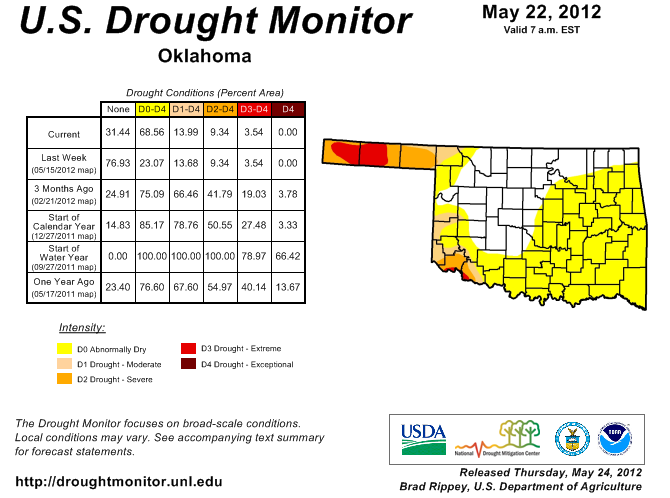
Keep in mind that this is not a full-fledged drought designation, but the
precursor to drought, described the Drought Monitor as an area
"Going into drought: short-term dryness slowing planting, growth
of crops or pastures."
The tabular statistics indicate that Oklahoma saw a 46% increase in D0 from
last week to this week, with 69% of the state now under some level of dry
designation. The areas already in a full drought designation (D1-D4) remained
at 14%. Those areas are also prone to rapid drought intensification. The newly
designated D0 area matches up with the areas of highest rainfall deficits since
the beginning of April.
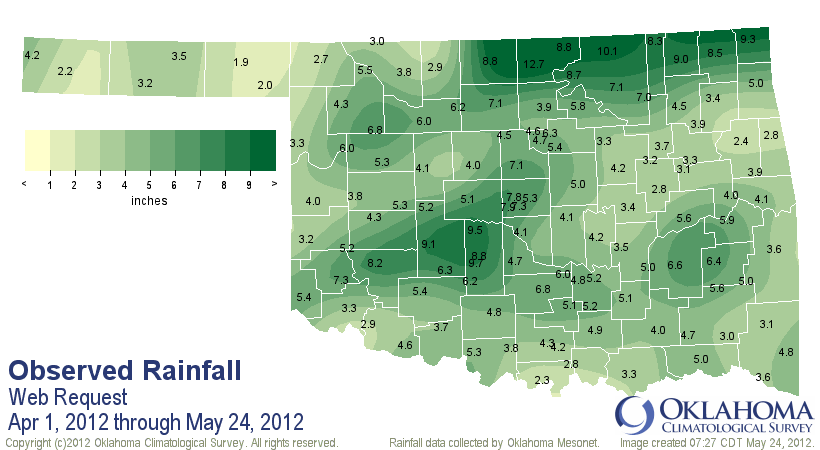
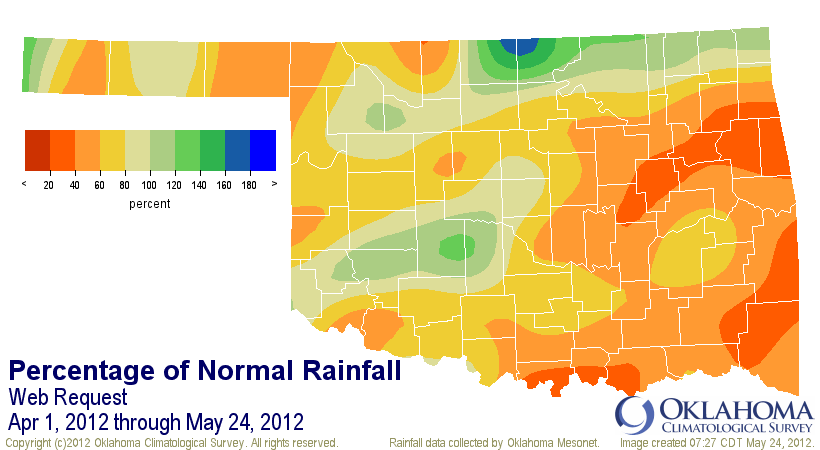
East Central (4.06 inches below normal) and southeastern Oklahoma (-4.92 inches)
are experiencing their fifth- and fourth-driest April 1-May 24 periods on
record, respectively.
The state is currently on pace to have one of its driest Mays on record, dating
back to 1895. The current statewide average rainfall, as of May 24, is 1.19
inches according to data from the Oklahoma Mesonet. The driest May on record
for the state occurred in 1988 with a total of 1.3 inches. In comparison, that
year saw the development of a fairly significant and damaging summer drought.
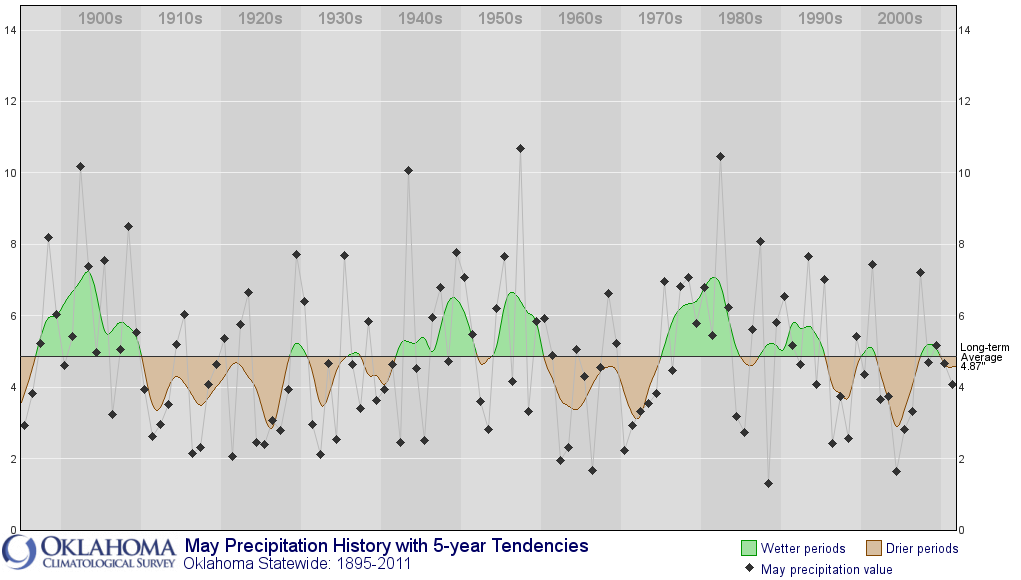
North central Oklahoma has had an average of 0.12 inches of rain in May thus
far, 3.55 inches below normal and the driest such period on record for that part
of the state. Only a smaller area based around Caddo and Grady Counties have had
a decent amount of rainfall during the month.
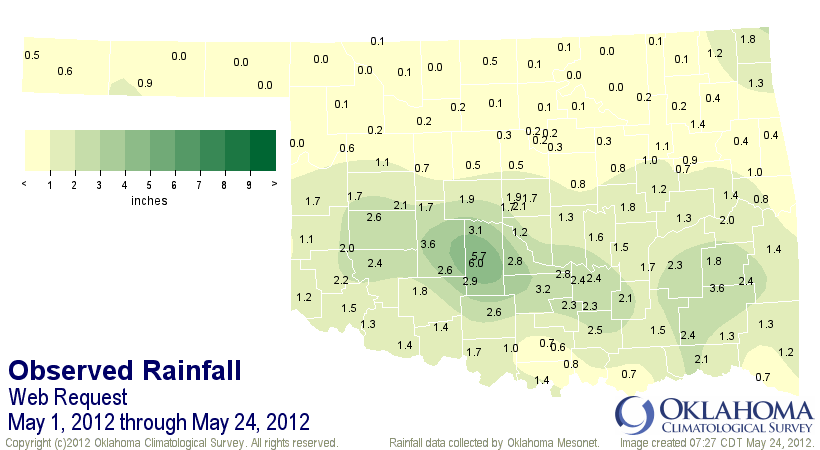
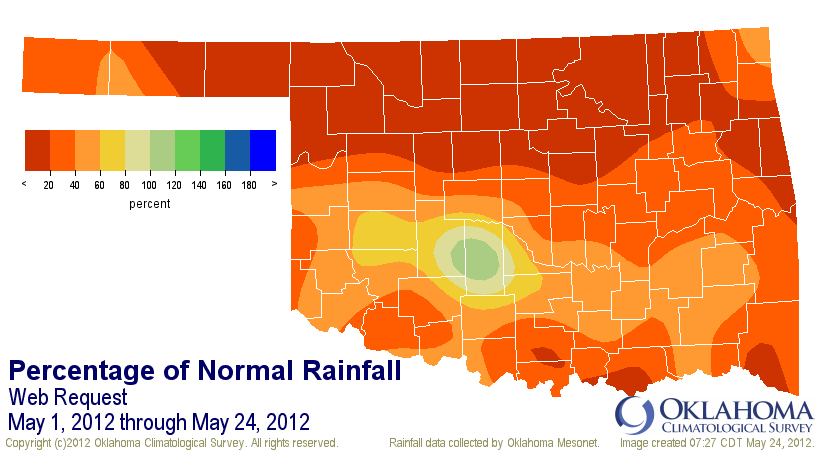
That area is still surviving on the generous rainfalls it received at the end
of April, although the wind and heat had begun to diminish that moisture from
the soil as well.
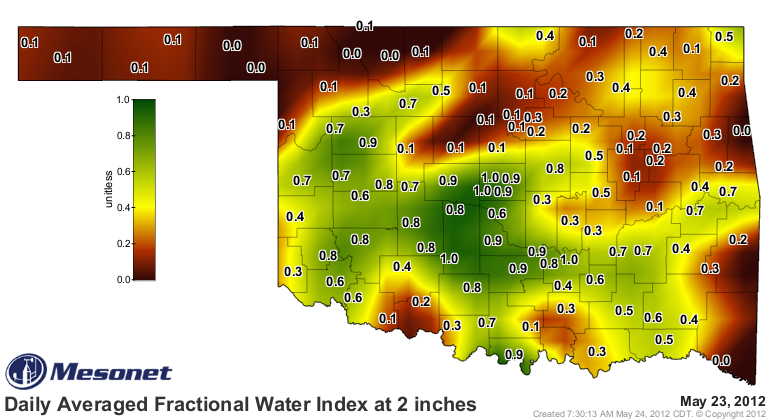
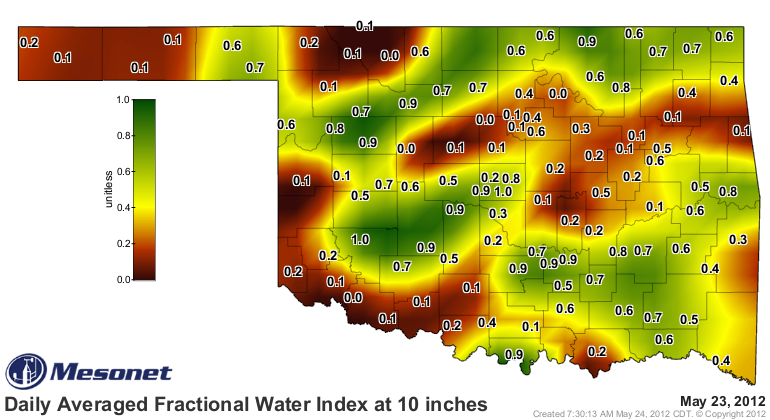
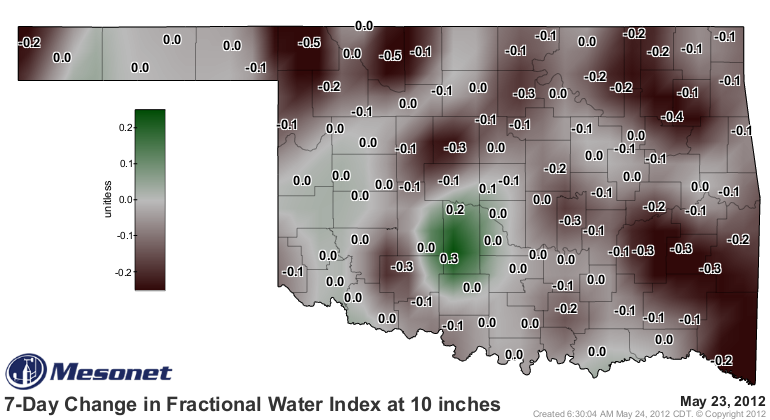
Oklahoma is not alone in the increasing dryness. The same types of conditions
are currently creeping across much of the Plains to the mid-South, from Kansas
and Oklahoma through Arkansas, Missouri, Illinois, Kentucky and Tennessee.

Stress to crops, pastures and water supplies is increasing across those areas.
The next decent chance for rain appears to be next week, so Oklahomans should
look to that period for relief. The weather patterns can change rapidly this
time of year. We are still within our normal wettest part of the year through
at least mid-June.
There is no "flash drought warning" like there is for "flash flooding." However,
the addition of such a large area of D0 in the Drought Monitor, not only for
Oklahoma but for much of the mid-South, should serve as that type of warning.
Gary McManus
Associate State Climatologist
Oklahoma Climatological Survey
(405) 325-2253
gmcmanus@mesonet.org
May 24 in Mesonet History
| Record | Value | Station | Year |
|---|---|---|---|
| Maximum Temperature | 111°F | TIPT | 2000 |
| Minimum Temperature | 36°F | EVAX | 2017 |
| Maximum Rainfall | 6.54″ | MCAL | 2015 |
Mesonet records begin in 1994.
Search by Date
If you're a bit off, don't worry, because just like horseshoes, “almost” counts on the Ticker website!